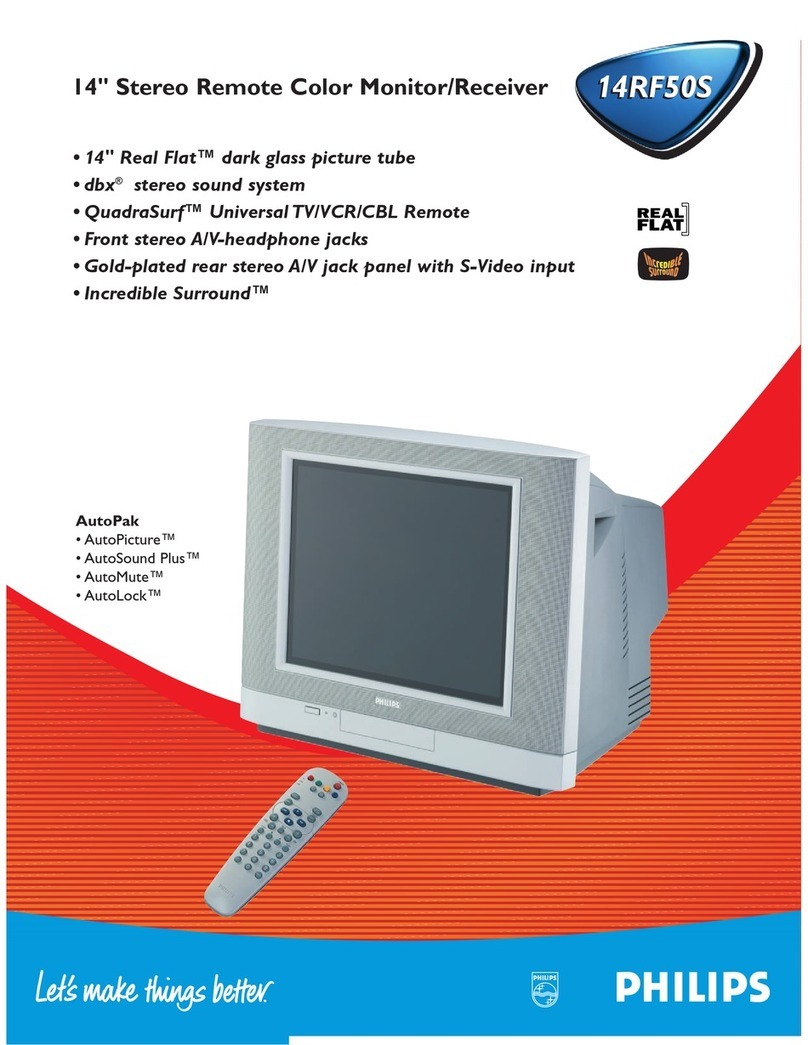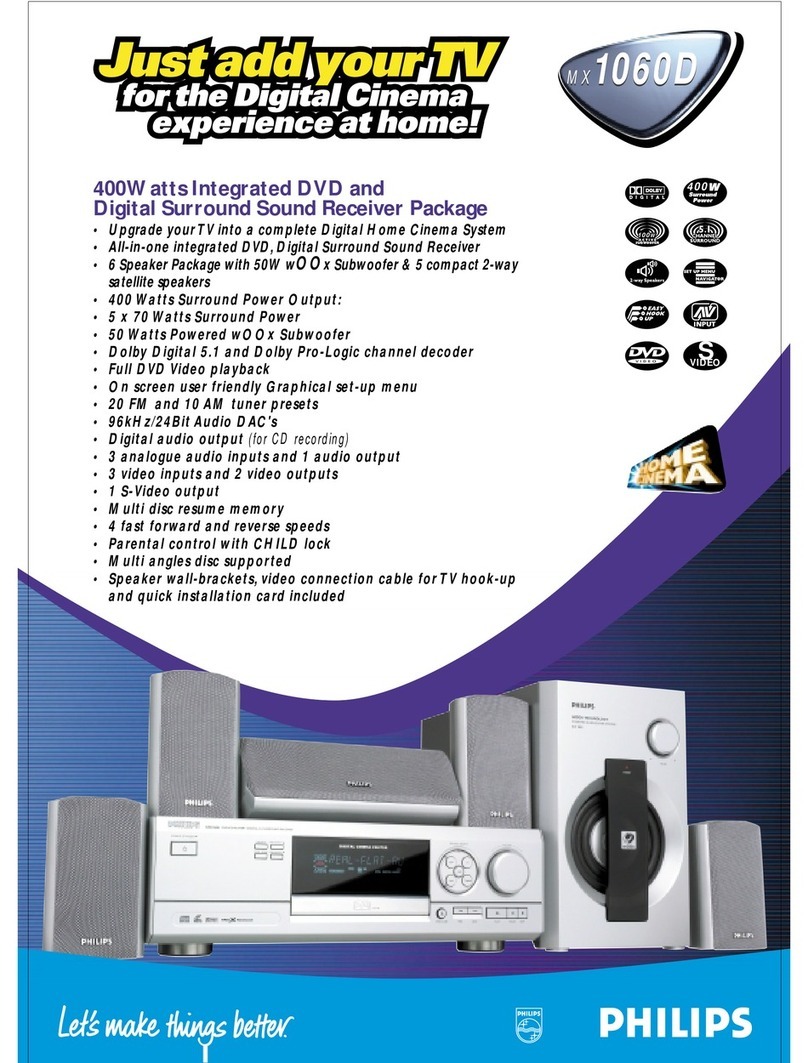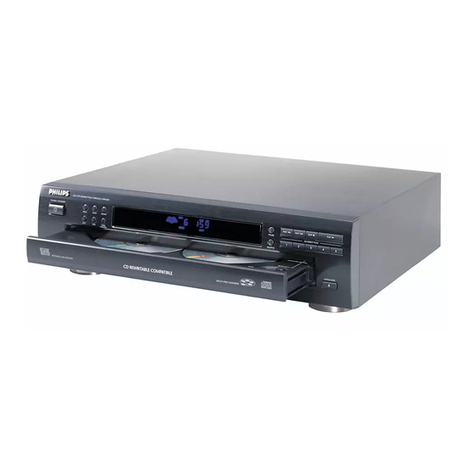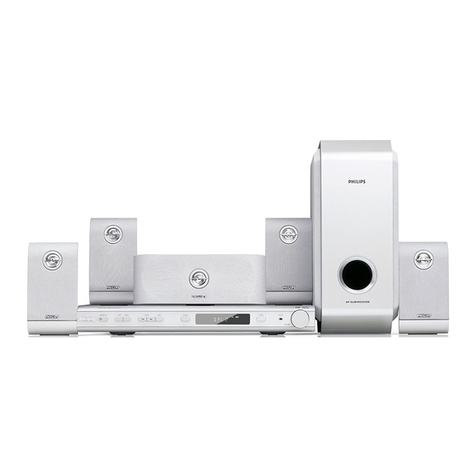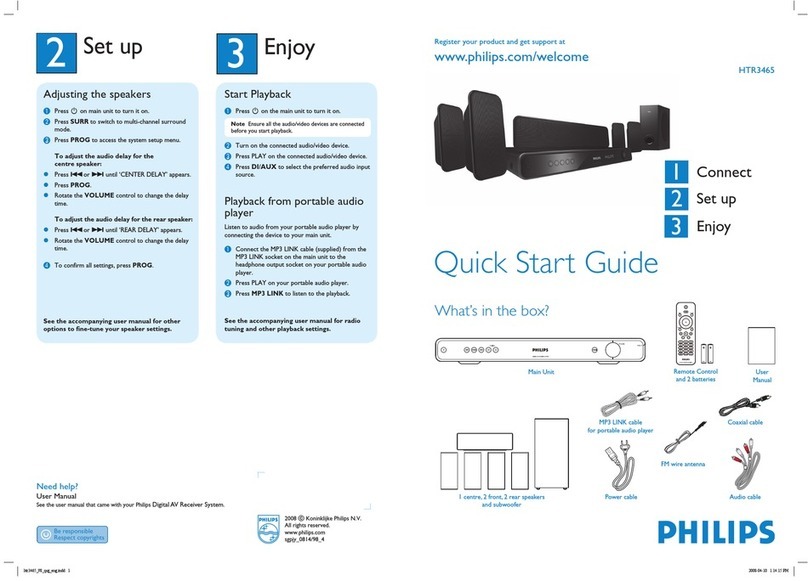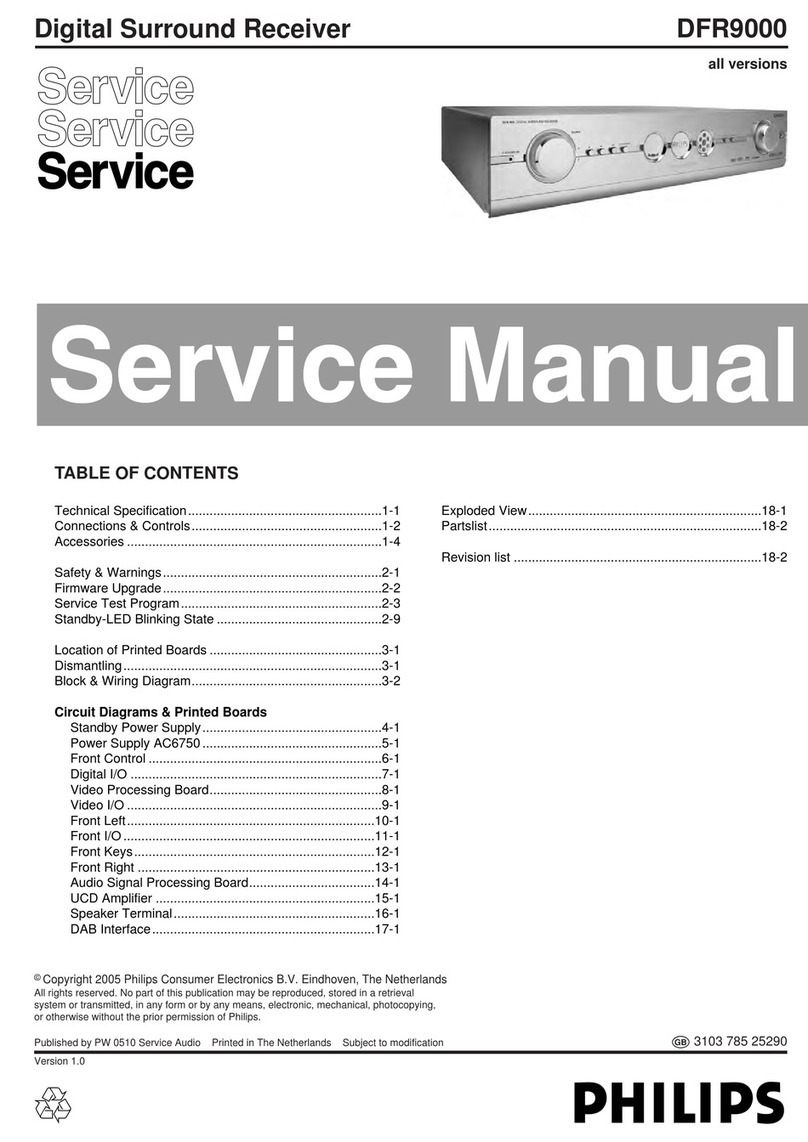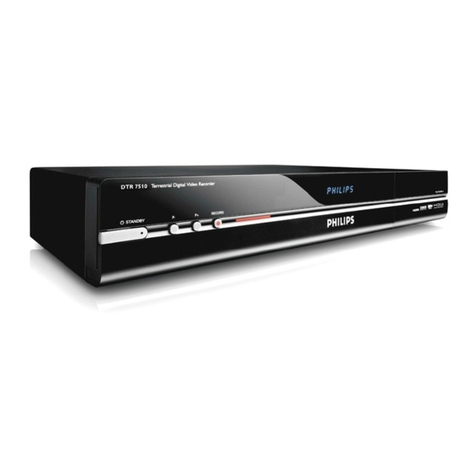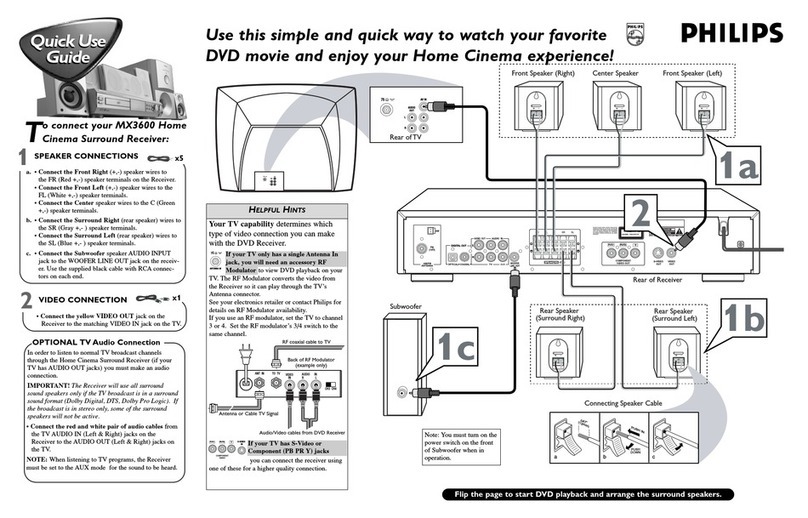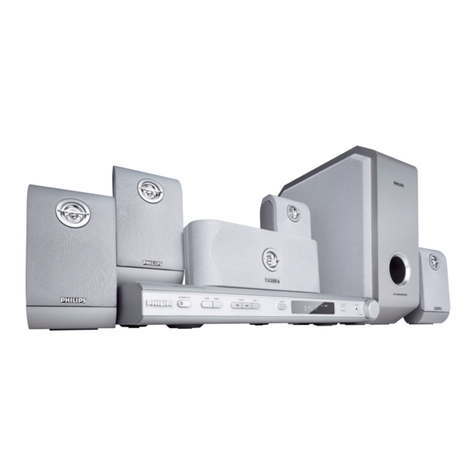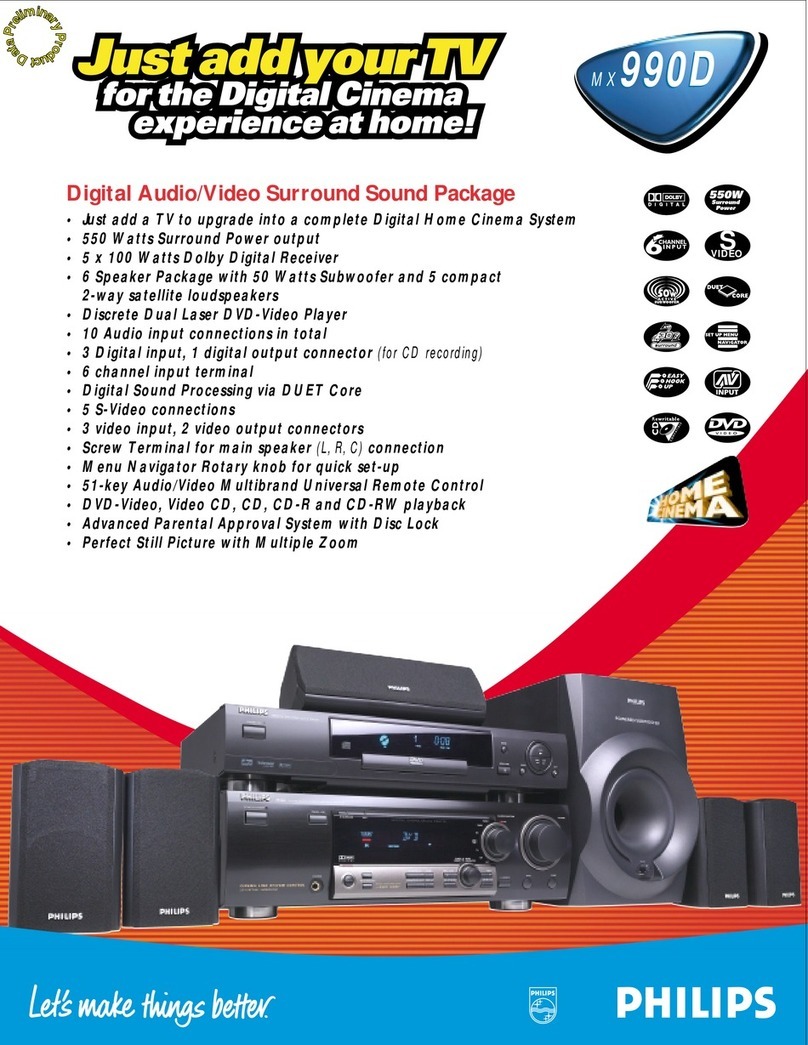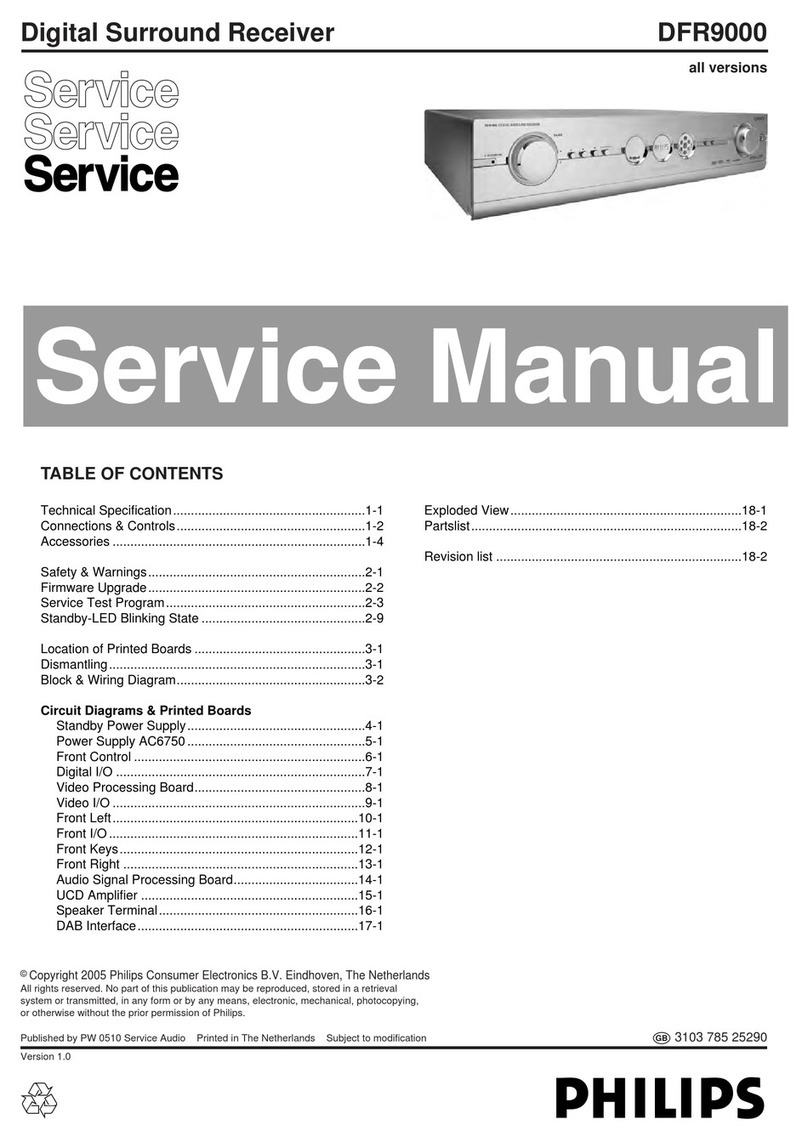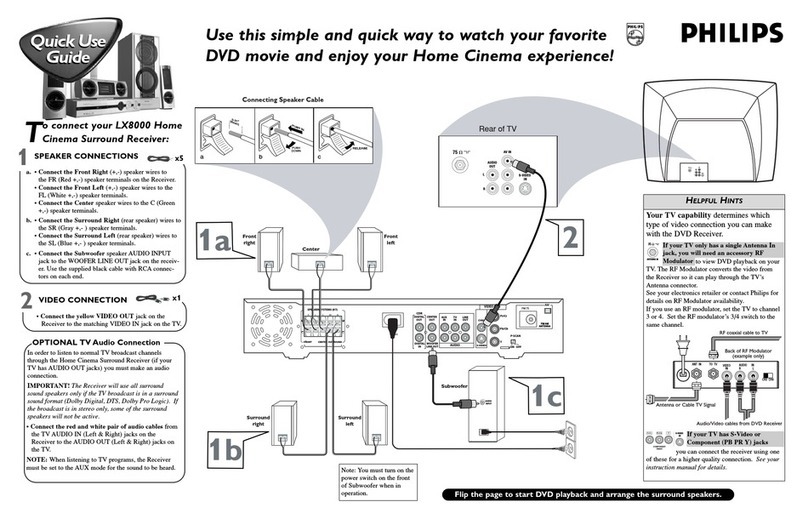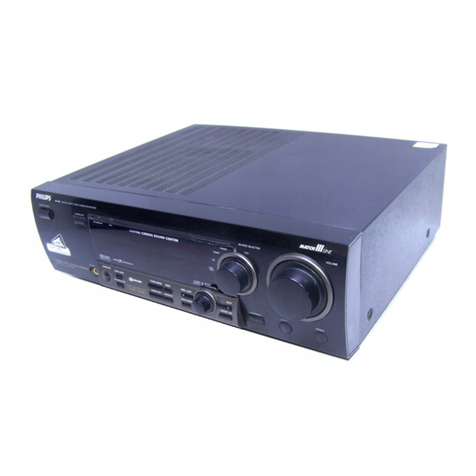
DIGITALE
A/V
SURROUND
RECEIVER
FR965,/00
envi
Ce
FR966/00s
ervice
ervice
DO[DoLBy
|
DIGITAL
TABLE
OF
CONTENTS
uv
»
io}
ce)
—_
1
OMmMPWNHHANAAKRWND
Location
Boards
/
System
info
....
Technical
Specification
.......
siete
Service
Tool
/
Measurement
setup
/
Safety...
Nae
Warning
/
Handling
Chip
components
...............
scapthenstes
staviedeele
1-
ADDreVIatiONS.
eivcccictiescaacivetledsscaucasctibeederdaccel
avi
tealedeenteass
ere
1-
INStrUCTION-FOMUSEs.....scccce.Zedeze
tap
ss
vex
ec
beceststs
deed
Muastigs
atvaesvnns
Dismantling
hints
/
Service
positionS
............c
cere
sy
caedes
3
Dismantling
hints
MDM
Module
..0........cecccceceeeeeeeteeeeeneeenereeee
3-
WITH,
GIA
GQIAIN
«a5,
convey
cos
cousceeacqactsaanexenedancnuvencavnesteevudcedetsceusancoebes
3
Block:diagra
m+.
t..5
Steck
evel
ati
cheet
IR
eee
anti
ee
eiS
Service:
Test
Program:
a:.isecs.sdiievesdecteversbeteens
Maeva
nati
aceteasiiies
Front‘Board®
«...25
Aascits
ein
nate
ase
Aide
ean
Tuner
95
diagram
Multi-Channel
Decoding
Module
.
us
Mains
Board
.........
33
9
Mono
Board
ee
e
Exploded
ViOw
sscvccisiticceetecdasbedeasstiesnssviacedepectsetenes
deplanseiectsedeas
11
Exploded
view
partslist
..............c:c::ccesscceccceesssscceceesseecseesenseneeees
12
Partslist
Mono:
Board
44.420
caine
hace
india
awit
13
7A
Safety
regulations
require
that
the
set
be
restored
to
its
original
Condition
and
that
parts
which
are
indentical
with
those
specified
be
used.
Copyright
1995
Philips
Consumer
Electronics
B.V.
Eindhoven,
The
Netherlands
All
rights
reserved.
No
part
of
this
publication
may
be
reproduced,
stored
in
a
retrieval
System
or
transmitted,
in
any
form
or
by
any
means,
electronic,
mechanical,
photocopying,
Or
otherwise
without
the
prior
permission
of
Philips.
Published
by
MD
0019
Service
Audio
Printedin
the
Netherlands
Subject
to
modification
3104
215
50070
&
PHILIPS
PCS
105
750
